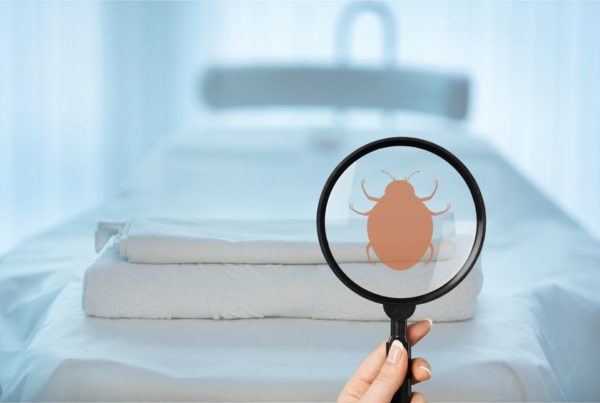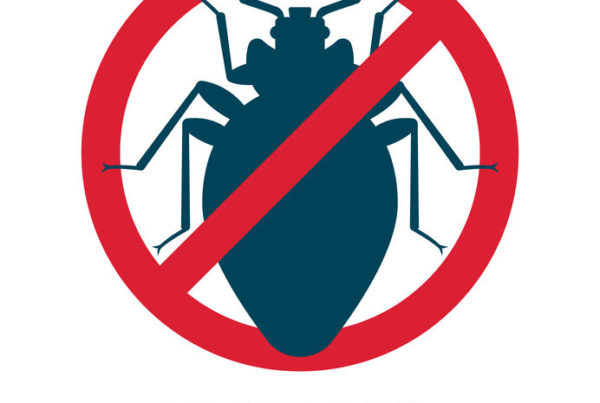When bed bugs invade an office, employees often panic, pointing fingers at each other and ostracizing coworkers believed to have introduced the pests. However, bed bugs are so prevalent that more than one worker may have brought them into the workplace or they may have migrated from another office in the building through vents, wall voids or electrical conduits. Barely 1/4 inch long and paper thin when not feeding, bed bugs can slip between the teeth of a backpack zipper; crawl into briefcases and purses, or ride into an office hidden in the seams of clothing or coats. A traveling coworker may carry bed bugs into the office inside his suitcase. Attracted to heat, bed bugs have even been found hiding inside the battery compartments of laptop computers, iPhones and iPods. Your home doesn’t have to be infested for you to pick up bed bugs. You can get them on a subway, bus or taxi. You can bring them home from a movie theater or library. If you brush against someone who is carrying bed bugs or sit in a seat recently vacated by a bed bug victim, there’s an excellent chance some of these pests will jump ship and go to work or home with you.
Employers must be proactive in dealing with bed bugs. Business owners should develop a comprehensive bed bug action plan to ensure that they and their employees are prepared should bed bugs come calling. An employer’s action plan should:
1. Educate employees so they can recognize bed bugs, signs of infestation and bite symptoms and encourage vigilance.
2. Update employee handbooks and set forth bed bug avoidance techniques and reporting procedures.
3. Emphasize the importance of early detection. Encourage employees to immediately advise management of bed bug activity in the workplace or at home.
4. Be open and sympathetic in communications with employees.
5. Should an employee carry bed bugs home, offer support. Consider defraying the cost of home inspection and treatment for employees, allow employees to use vacation days and the Family and Medical Leave Act to cope with home infestations.
6. Arrange immediate treatment with a licensed pest control professional.
7. Launch a containment plan to prevent cross-contamination between work and home.
If your office is invaded by bed bugs, employees can also take proactive steps to prevent bed bugs from hitchhiking home with them:
1. Educate yourself and your family so you know what bed bugs and their bites look like, where to look for them and signs of infestations.
2. Adopt a minimalist lifestyle. Get rid of clutter where bed bugs can hide. Keep everything off the floor.
3. Inspect your office chair and desk for signs of bed bugs daily. Choose metal over wood office furniture.
4. Leave briefcases and laptops at work. Use a hard-sized, not fabric, briefcase. Minimize the number of items you carry between work and home and transport them in sealed plastic bags.
5. Zip work items into a bed bug-proof luggage liner to minimize cross-contamination.
6. When you arrive home after work, leave your shoes in the garage. Inspect each item carefully before taking it into your home.
7. Change clothes as soon as you get home. Place work clothes in sealed plastic bags until they can be laundered.
8. At home, cover mattresses and box springs with bed bug-proof mattress encasements to prevent bed bugs from infesting your bedding.
9. If your office is the site of an active infestation, regularly inspect sheets and mattresses for bed bug signs.




